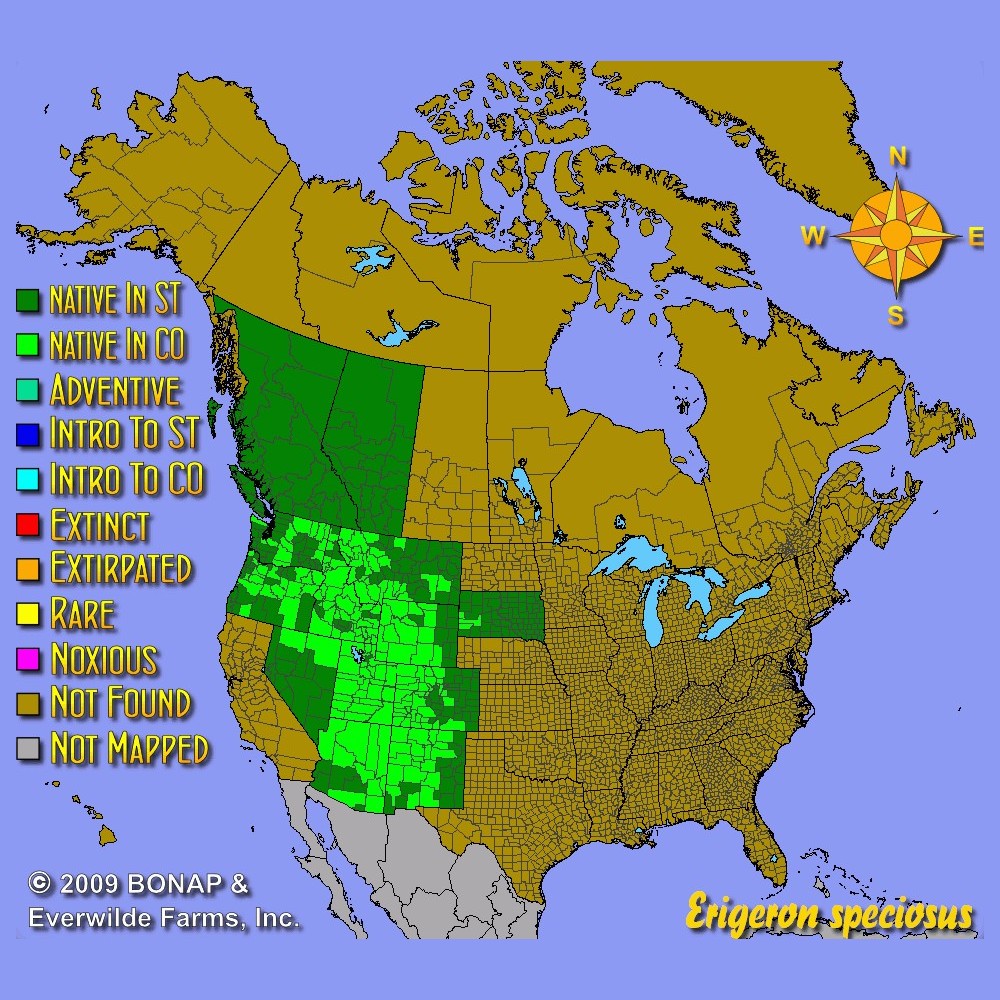Fleabane Daisy Seeds
Erigeron speciosus
- HOW TO GROW
- FAST FACTS
HOW TO GROW
Sowing: Direct sow in late fall, pressing the Erigeron Speciosus seeds into the surface of the soil since they need light to germinate. For spring planting, mix the Fleabane Daisy seeds with moist sand and store in the refrigerator for 60 days before direct sowing. Germination may be slow and naturally irregular.
Growing: Water seedlings regularly once they are established. Mature plants tolerate heat and drought well, and should only need watering in periods of extended drought. This plant prefers light, sandy soil. Deadheading spent blossoms will help extend the blooming; if blooming decreases, but the plant back for new growth. Plants can also be divided after several years of growth. This plant reseeds readily, though cutting off the flowers before they begin to develop seed will prevent this. This plant attracts bees and resists deer.
Harvesting: For fresh flowers, cut long stems of flowers that have just opened and place them in water immediately; strip the leaves that will fall below the water.
Seed Saving: After flowering, the plant will produce seed heads containing small clusters of brown seed. Since small birds love to eat the seed, harvest it promptly to avoid loss. Cut the mature seed heads, or shake them into a container to remove the seed material. Clean the Erigeron Speciosus seeds as well as possible, then store them in a cool, dry place.
FAST FACTS
Common Names: Dainty Daisy, Daisy Fleabane, Aspen Fleabane, Oregon Fleabane
Latin Name: Erigeron speciosus
Species Origin: US Native Wildflower
Type: Native Wildflowers
Life Cycle: Perennial
USDA Zones: 3, 4, 5, 6, 7, 8, 9, 10
US Regions: Mountain, Arid/Desert, Plains/Texas
Seeds per Ounce: 118,000
Stratification: Cold/Wet for 8 Weeks
Germination Ease: Stratify 8 Weeks
Sunlight: Full Sun, Part Sun
Height: 18 Inches
Color: Blue, Purple
Bloom Season: Blooms Late Spring, Blooms Early Summer
DESCRIPTION

HOW TO GROW
Sowing: Direct sow in late fall, pressing the Erigeron Speciosus seeds into the surface of the soil since they need light to germinate. For spring planting, mix the Fleabane Daisy seeds with moist sand and store in the refrigerator for 60 days before direct sowing. Germination may be slow and naturally irregular.
Growing: Water seedlings regularly once they are established. Mature plants tolerate heat and drought well, and should only need watering in periods of extended drought. This plant prefers light, sandy soil. Deadheading spent blossoms will help extend the blooming; if blooming decreases, but the plant back for new growth. Plants can also be divided after several years of growth. This plant reseeds readily, though cutting off the flowers before they begin to develop seed will prevent this. This plant attracts bees and resists deer.
Harvesting: For fresh flowers, cut long stems of flowers that have just opened and place them in water immediately; strip the leaves that will fall below the water.
Seed Saving: After flowering, the plant will produce seed heads containing small clusters of brown seed. Since small birds love to eat the seed, harvest it promptly to avoid loss. Cut the mature seed heads, or shake them into a container to remove the seed material. Clean the Erigeron Speciosus seeds as well as possible, then store them in a cool, dry place.
FAST FACTS
Common Names: Dainty Daisy, Daisy Fleabane, Aspen Fleabane, Oregon Fleabane
Latin Name: Erigeron speciosus
Species Origin: US Native Wildflower
Type: Native Wildflowers
Life Cycle: Perennial
USDA Zones: 3, 4, 5, 6, 7, 8, 9, 10
US Regions: Mountain, Arid/Desert, Plains/Texas
Seeds per Ounce: 118,000
Stratification: Cold/Wet for 8 Weeks
Germination Ease: Stratify 8 Weeks
Sunlight: Full Sun, Part Sun
Height: 18 Inches
Color: Blue, Purple
Bloom Season: Blooms Late Spring, Blooms Early Summer






